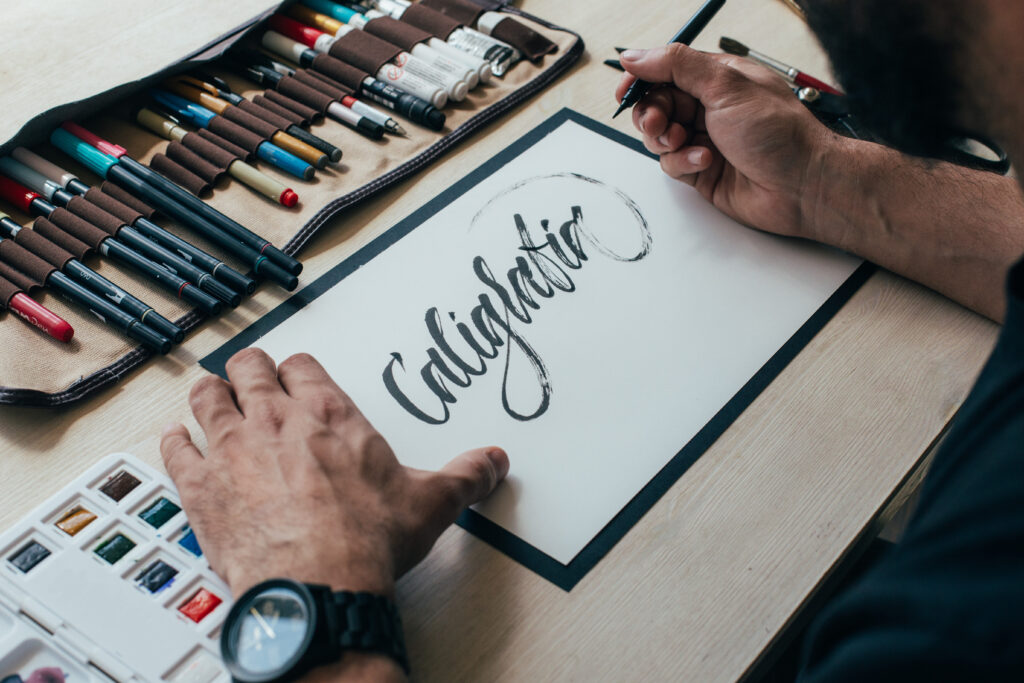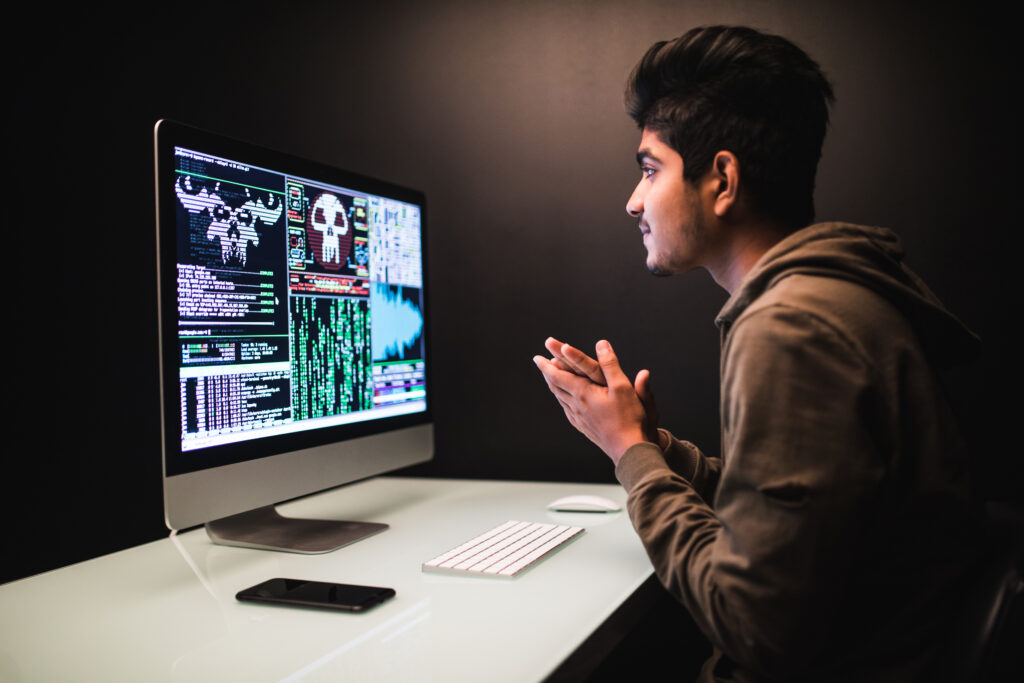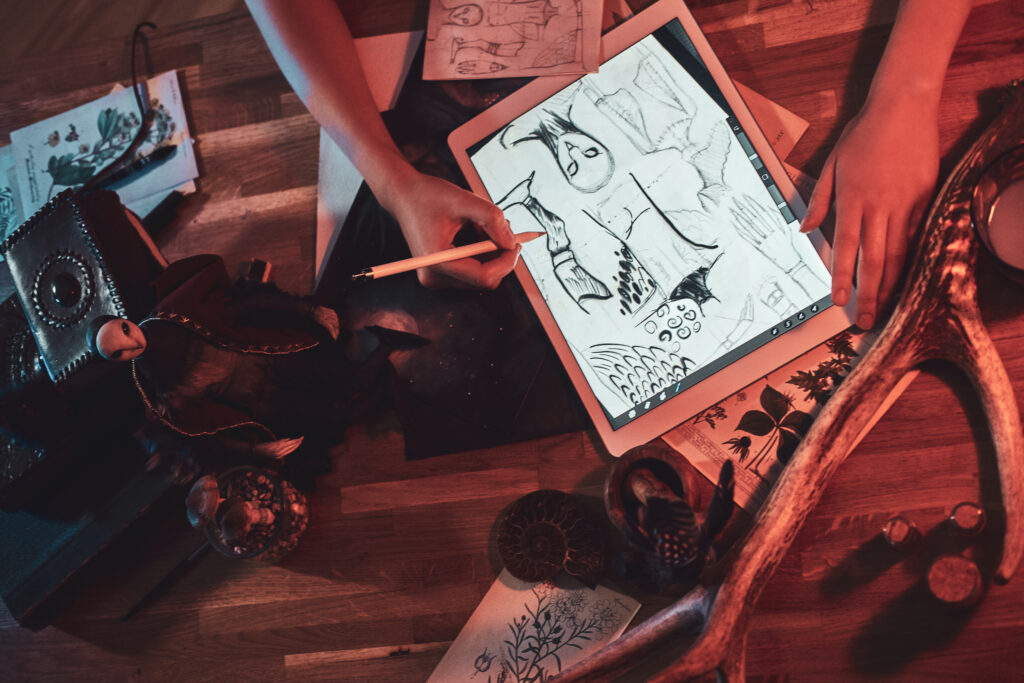Creating Digital Art: GANs Guide
In the ever-evolving landscape of digital artistry, Generative Adversarial Networks, or GANs, stand at the forefront of innovation, allowing artists and technologists to venture into uncharted creative territories.
This guide provides a structured approach to harnessing the capabilities of GANs, beginning with an introduction to the underlying principles and progressing through the intricacies of model training and output generation.
By presenting a systematic path that navigates the complexities of neural network architectures and the nuances of dataset curation, the guide equips enthusiasts with the necessary tools to craft digital art that blurs the line between human and machine creativity.
As we embark on this journey, one must prepare to confront the challenges inherent in such a sophisticated technology and the potential for disruption in the traditional notions of artistry and originality that it brings forth.
Key Takeaways
- GANs consist of a generator and a discriminator neural network.
- GANs are used to create and refine digital artwork.
- Python and Keras are essential for GAN development.
- Training is an iterative process of creation and critique.
Understanding GANs Basics

At the core of generating digital art with GANs lies the interaction between two neural networks: the generator, which synthesizes new data instances, and the discriminator, which evaluates their authenticity against actual data samples. This dynamic duo forms the foundation of a Generative Adversarial Network (GAN), a powerful tool for creating and refining digital artwork that mirrors various art styles.
The generator initiates the process by producing art that attempts to mimic a particular style, drawing inspiration from datasets that could include Cubist masterpieces or other art movements cataloged on platforms like WikiArt.org. However, the discriminator plays a crucial role in this artistic dance, critically assessing the generated images against genuine artworks to determine their authenticity.
As the GAN iteratively trains, the discriminator provides feedback to the generator, which uses this information to fine-tune its output, progressively enhancing the quality and diversity of the art produced. Implementing GANs typically involves programming environments like Python and frameworks like Keras, enabling intricate orchestration of these neural networks.
Moreover, harnessing the computational power of platforms like Spell’s GPU instances can significantly expedite the training process, ensuring that the GANs efficiently evolve to produce increasingly convincing and creative renditions of art styles.
Setting Up Your Environment

Having established the foundational understanding of GANs, the next step involves configuring your computational environment to initiate the creation of Cubism-inspired digital art. It is essential to have Python and Keras readily installed as they form the backbone of your GAN development setup. You will use these tools to manipulate elements from different data sources and craft a neural network to generate novel artistic imagery.
To ensure a smooth workflow, your dataset must be carefully curated. In this case, the dataset will consist of Cubism-style images. Below is a structured plan for setting up your environment:
| Requirement | Description | Source/Action |
|---|---|---|
| Python & Keras | Core programming language and deep learning library | Install on system |
| Art Style | Define the aesthetic focus of the dataset | Cubism images selected |
| Dataset Acquisition | Collect a coherent set of training images | Download from WikiArt or cs-chan’s repository |
| GPU Instance | Leverage computational power for model training | Set up on Spell or similar platform |
Proceed by creating a ‘dataset’ folder to organize the images you’ve obtained. This will streamline the data preprocessing phase. Lastly, configure a robust GPU instance to expedite the training of your GAN model, ensuring efficiency in your creative endeavor.
Training Your GAN Model

Embarking on the journey of training your GAN model requires meticulous preparation and organization of your curated dataset, which will serve as the foundation for teaching the neural network to generate Cubism-inspired digital art. The dataset must encompass a diverse range of images that collectively represent the different styles within the Cubism movement. This diversity ensures that the model will not only learn specific features but also the broader aesthetic principles of the genre.
The GAN model’s architecture is defined by two distinct components: the generator and the discriminator. The generator creates images that will look convincingly like genuine Cubist art. At the same time, the discriminator evaluates them against the authentic dataset, providing feedback to refine the generator’s output.
Training proceeds iteratively, with the generator and discriminator engaging in a continuous loop of creation and critique. This loop is instrumental in optimizing the quality of the generated art. GPU acceleration is crucial here, significantly reducing training times and enabling more complex models to learn efficiently.
Monitoring the GAN’s performance using dedicated platforms or tools is vital throughout this process. Effective management of the training phase helps prevent common issues such as mode collapse, ensuring a steady progression towards creating high-fidelity digital art.
Generating Your First Artwork

After meticulously preparing your GAN model through an iterative training process, you can generate your first piece of Cubism-inspired digital art. This is a pivotal moment where your technical prowess and creative exploration converge, facilitated by the sophisticated architecture of GANs.
To ensure success in this venture, consider the following key steps:
- Load the Trained Model: Initiate the process by loading your trained GAN model, which has learned the intricacies of Cubism from the curated dataset.
- Set Generation Parameters: Determine the number of images to generate and the level of variation by fine-tuning the input noise vector. This step dictates the diversity and uniqueness of the generated art.
- Create and Save Artwork: Utilize the generator component of your GAN to produce digital art. Once generated, save your artwork in the desired format for further analysis or display.
The goal is to generate digital art that mimics the Cubism style and introduces novel aesthetics that could only emerge from the complex interplay of a GAN’s neural networks. This process showcases the potential of GANs in the art world and paves the way for advancements in how we create and perceive art in the digital age.
Fine-Tuning and Experimentation

To optimize the performance of GANs in generating Cubism-inspired digital art, it is essential to engage in fine-tuning and experimentation with various hyperparameters, network architectures, and training techniques.
Fine-tuning involves methodically adjusting hyperparameters, such as the number of layers, neurons per layer, batch size, and learning rate, to find the optimal configuration that allows the GAN to produce high-quality images.
The stability and convergence of GANs can be markedly improved by experimenting with different optimization algorithms. Careful calibration of the learning rate is crucial; too high a rate may cause the model to overshoot minima, while too low a rate can result in protracted training times without significant improvement. Exploration of various loss functions and regularization strategies is also pivotal in guiding the GAN toward generating aesthetically pleasing and authentic-looking art.
Additionally, progressive growth of GANs or spectral normalization can be employed to enhance the stability during training. Going further, input data preprocessing and augmentation can significantly diversify the training dataset, leading to more creative and varied digital art outputs.
Through meticulous experimentation and fine-tuning, GANs can be trained to produce artwork that is not unique but also resonates with the complexity and style of Cubism.
FAQs
Can GANs be applied to different forms of digital art, such as illustrations or concept art?
Yes, GANs can be applied to various digital art forms, including illustrations, concept art, and more. The adaptability of GANs allows artists to explore and generate different visual styles and artistic expressions.
Are there ethical considerations in the use of GANs for digital art creation?
Yes, ethical considerations include issues related to the responsible use of GANs, avoiding biases in training data, and being transparent about the involvement of AI in the creative process. Artists should also consider copyright and intellectual property concerns.
How can artists integrate GANs into their creative workflows for digital art?
Artists can integrate GANs into their workflows by using existing pre-trained models or training their models. They can experiment with different architectures, explore hyperparameter settings, and incorporate the generated content into their artistic projects.
Can GANs be used to mimic specific artistic styles or emulate famous artists?
Yes, GANs can be trained to mimic specific artistic styles or emulate the works of famous artists. By providing a dataset with examples of the desired style, the GAN learns to generate digital art that reflects similar characteristics.
How can artists stay updated on advancements in GAN technology for digital art?
Artists can stay updated by following developments in the AI and art communities, attending conferences, and exploring online resources. Engaging with the broader community allows artists to discover new techniques and advancements in GAN technology.
